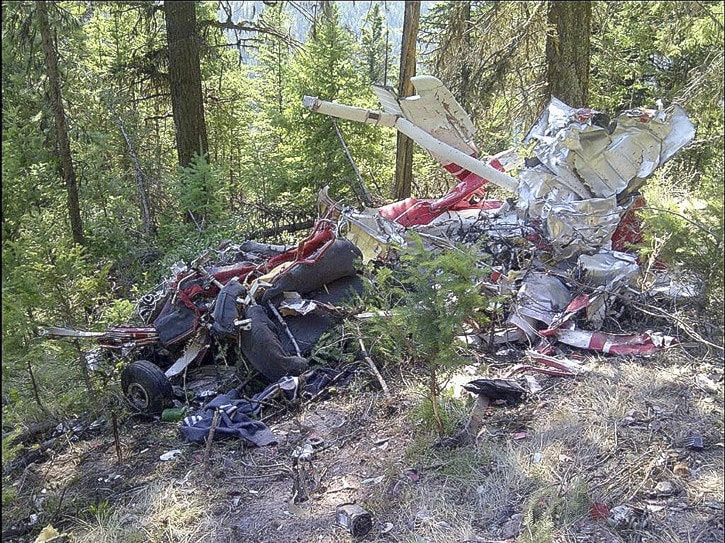A plane crash near Cache Creek took the life of a 16-year-old student pilot last week. Lorne Perrault, a student at St. Ann’s Academy in Kamloops, went missing in a single-prop 172 Cessna after taking off from Kamloops Airport. He apparently crashed in the hills near Cache Creek, in steep and near-inaccessible terrain.
Perrault was training for his pilot’s licence and had almost 100 hours of flying experience. He took off from Kamloops Airport for what was supposed to be a two-hour solo flight on the morning of Tuesday, Aug. 6, performing exercises in the area near Kamloops Lake.
Perrault and the plane were found at about 6:30 p.m. on Wednesday, Aug. 7, by a team in a Royal Canadian Air Force Buffalo aircraft.
Investigators for the Transportation Safety Board of Canada (TSB) arrived last Thursday to look into the crash. They have now completed most of the “field phase” of their inquiry. Based on photos of the site, TSB regional manager for aviation accident investigations Bill Yearwood said it appears the plane collided with the ground at a steep angle while travelling at a high velocity.
“The damage is consistent with an unsurvivable collision with the ground,” he said. “The understanding of why that happened, there’s a lot of work yet to be done.”
With a survey of the site mostly complete, the Cessna will be transported to Kamloops, where it can undergo further analysis as needed. Yearwood said he expects it will likely be months before the TSB issues a final report on Perreault’s death.
The TSB has opted to do a longer, more in-depth investigation of the crash, beyond what would be required by the B.C. Coroners Service, Yearwood said. “When we look at these circumstances, we try to determine if there is something we could learn in doing a full investigation that could help the public and the aviation community avoid a similar occurrence.”
“This occurrence is in a mountainous area,” Yearwood said. “I can’t say whether at this point the issues were related to mountainous terrain or flight training, and that’s why we want to do a long investigation. If we find issue in the control of students in a flight-training environment or issues of insufficient standards for mountain flying, we would raise those.”
Yearwood said if investigators discover anything that poses an immediate hazard to the public, they will release that information in advance of their full report.
“[Perrault] was cleared to go out [near Kamloops Lake] and not venture off from there,” said David Cruz of TylAir Aviation Ltd., the flight school at which the student was training. “Once those exercises were complete, he was to return at 12:45 pm. When he was not at the tarmac at 12:45, the company immediately dispatched two planes to search for him in the area he was supposed to be.”
When the search planes failed to locate either the pilot or his plane, the flight school called in the Coast Guard Search and Rescue, which then dispatched Buffalo aircraft and search helicopters.
“These planes are required to fly at a higher altitude, at a safe altitude, so that there is no challenge with any type of obstacles in the vicinity,” Cruz said. “The practice area where he was instructed to perform his exercises was right above the lake, so there were no obstructions in the near vicinity.
“The weather conditions were near-perfect, for lack of a better word, [on Aug. 6] in the morning when he departed. So, we’re unsure at this time what . . . caused him not to return.”
Perrault was an experienced flyer with 70 to 80 trips under his belt, more than 30 hours of solo flight time, and all the licensing required to fly a plane.
“He had extensive knowledge of how to fly a plane,” Cruz said.
Barbara Roden
